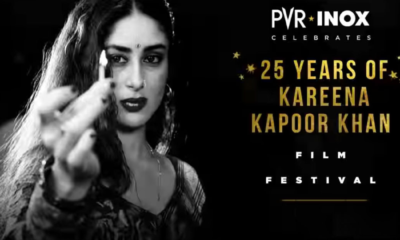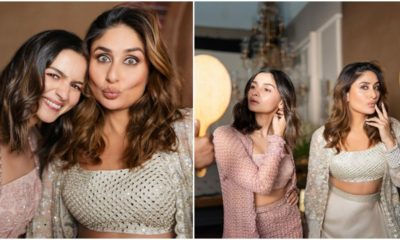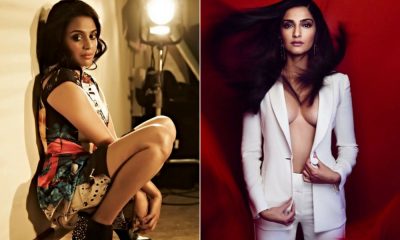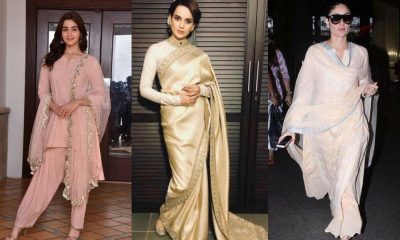Cover Story
Kareena Kapoor’s Ivory Chikankari Salwar
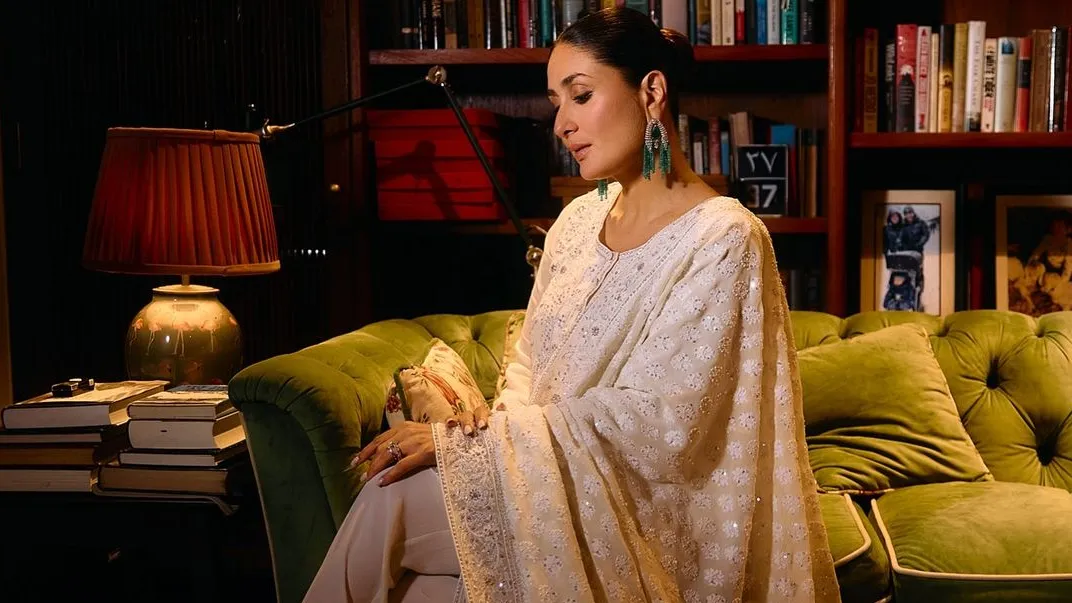
Around the world, chikankari has become a staple in celebrity styling. Kareena Kapoor Khan most recently donned a suit set designed by the nation’s renowned embroidery designers, Abu Jani Sandeep Khosla. The Mughal emperor Jehangir’s wife, Nur Jahan, was a patron of the classic white-on-white art that was originally done by hand on muslin cloth in the 17th century.
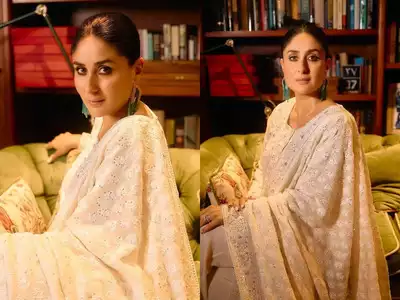
An ivory hand-embroidered kurta and a chikankari dupatta, adorned with sparkling sequins, pearls, and stones, comprise this ensemble on Kareena Kapoor Khan. Gianvito Rossi shoes and Rare Heritage jewellery, which has tasteful hints of jade green, finish the ensemble.
A month ago, Abu Jani Sandeep Khosla unveiled their collection, which included opulent materials and elaborate chikankari embroidery. Asal Bride honours tradition with a contemporary elegance, and The Regal Groom of Mard has ostentatious menswear with strong borders and intricate embroidery. At the Hyundai India Couture Week, Wamiqa Gabbi and Taha Shah sparkled as show stoppers for Asal & Mard by Abu Jani Sandeep Khosla.
Cover Story
THE QUIET FORCE OF A MODERN ICON

Behind every poised performance is a quiet, unshakable resolve—a journey of an artist who shows that true strength lies not in loud declarations, but in unwavering integrity and purpose.
There’s something about shoot days that hum with their own energy—where art direction instinct, and moments unfold faster than they can be captured. The FWD Magazine cover shoot with Madonna Sebastian was no exception. From the moment the segment began, it was a visual symphony—natural light, candid motion, curated chaos—all anchored by her easy presence.

By the time the cameras wrapped on the sunlit exteriors, Madonna returned indoors, slipping into a pristine white outfit that seemed to echo her state of mind: calm, clear, and open. The crew took a breather, the lenses cooled, but she remained in rhythm—poised yet unhurried.
It was then, in this in-between window—after the high-energy shoot, before the final touch-ups resumed—that she settled down for an unscripted chat with RJ Asha. No stage, no formal setup—just an airy corner of the space, a couple of chairs, and a warm conversation waiting to happen.
And that’s exactly what did. A moment carved out not for press quotes, but for perspective. For a glimpse into the artist behind the actress. The grounded soul behind the gaze the camera loves
You know Madonna. Or at least, you think you do.
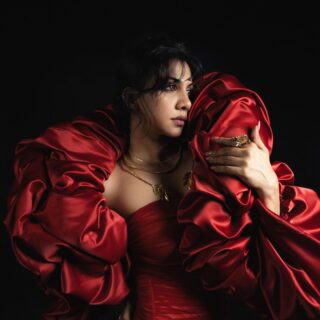
She’s the chirpy Celine from Premam, the graceful Anjali from Kavan, the quiet storm in Kadhalum Kadanthu Pogum. But sitting across from her now, you start t0o sense something else. This is a woman who refuses to be boxed in by the roles she’s played, or the fame she’s earned. She isn’t just riding the wave of stardom—she’s surfing it, steering it, sometimes even swimming against it.
“I’ve never really chased this,” she says, “I just wanted to do good work. Whether it was singing, acting, even being on stage—if it didn’t feel honest, I’d walk away.”
That honesty has become her compass. It’s also what’s made her unpredictable in the best way. In an industry obsessed with hypervisibility and curated glam, Madonna’s detours feel radical. A music video here. A break to focus on home, or a spontaneous trip with friends there. No apologies. No PR spin. Just life.But make no mistake: there’s steel under the softness.
“I think people assume that if you’re polite or soft-spoken, you’re passive. That’s not true,” she says, eyes locking in. “I’ve said no more times than I’ve said yes in this industry. Not because I’m arrogant—but because I have clarity.”
That clarity has shaped her choices—from her refreshing screen presence to her deeply personal music. Her band’s indie singles drop like secret letters, far from the formulaic world of playback hits. Her voice, husky and haunting, doesn’t scream for attention. It holds it.
So how does she choose her projects?
Sometimes, it’s a script. Sometimes, it’s a song I’m writing at 2 a.m. under fairy lights. Sometimes it’s a film that pushes me out of my comfort zone, like Leo.”
Ah yes, Leo. The recent mega-hit that reminded audiences just how effortlessly she can hold her ground .

But ask her about the high of being in such a blockbuster, and she smiles without a trace of self-congratulation.
“It was a new space for me,” she admits. “Big canvas, big stakes. But what mattered most was working with people who respected the craft. I’m not into the noise around it. I liked the discipline of it.”
She’s not performing cool—she just is. In a world chasing trends, Madonna moves to her own rhythm.
Even her style says it all: breezy kurtas, vintage florals, bold red lips. Effortless. Unbothered.
When I ask about her five-year plan, she grins.
“I plan for joy. I plan for peace. I plan for purpose.”
That could mean a film—or a forest with no signal. She’s fine either way.
Madonna doesn’t demand attention. She owns it—with quiet power. And she’ll keep showing up, disappearing, and returning—on her terms.
Just like her art.

There’s a kind of presence that doesn’t chase attention—but effortlessly holds it. A quiet confidence that doesn’t need to speak loudly to be heard. In every gesture, every glance, there’s ease. Style, too, follows suit—never trying too hard, yet never fading into the background. A mix of breezy staples, soft silhouettes, vintage moods, and the occasional splash of edge—it all feels lived-in, not styled. Real.
Back inside, lights shift and lenses focus again. Another look, another frame—but nothing feels rehearsed. Just a rhythm she owns, unbothered by the pace around her. Some people leave impressions with spectacle. Others, with silence and substance.
This isn’t about trends or timelines. It’s about being grounded. It’s about rhythm over rush. And it’s a reminder that sometimes, the most magnetic thing in the room is the one not trying to be.
Cover Story
Starlit Wedding – Diya Krishna

Actor Krishna Kumar’s daughter, Diya Krishna, a popular social media influencer, recently married Ashwin Ganesan, a software engineer, after a long-term relationship. The couple celebrated their special day with a beautiful ceremony at a luxurious hotel in Thiruvananthapuram. Diya’s family, including her siblings Ahaana, Ishani, and Hansika, along with her parents Sindhu Krishna and Krishna Kumar, looked radiant in coordinated light pink ensembles. The wedding was an intimate gathering, attended by close family and friends. Here are all the details of their magical day.
Haldi
For the Haldi ceremony, Diya and Ashwin were spotted in coordinated white outfits by Santini. The look was beautifully elevated with a pop of color from Diya’s pink dupatta and stunning floral jewellery by Florita Florals, adding a fresh, vibrant touch to the celebration.

Diya’s Outfit : Santinni
Aswin’s Outfit : Santinni
MakeUp : Amala Brahmanandan
Jewellery : Florita Floral
Event Planner : Grand Oyster
Photography : Abhijith SK
Location : Taj Green Cove Resort & Spa
Mehendi
Diya looked effortlessly chic in a vibrant multi-colored skirt set by Mahek Designs for the Mehendi celebration. Ashwin complemented her perfectly with a multi-hued jacket by Santini, completing their joyful and lively Mehendi look.

Diya’s Outfit : MAHEK DESIGNS
Aswin’s Outfit : Santinni
Mehandi : MISHMA KAMAL
Event Planner : Grand Oyster
Photography : Abhijith SK
Sangeeth
Diya and Ashwin absolutely rocked their Sangeet in stunning black outfits by Santini, exuding elegance and style as they celebrated the night in perfect sync!

Diya’s Outfit : Santinni
Aswin’s Outfit : Santinni
Jewellery : Atelier by Regal Jewellers
MakeUp : Laxmi Venugopal
Event Planner : Grand Oyster, Decor Lab Events
DJ : TONIQ SQUAD
Photography : Abhijith SK
Wedding
For the wedding, Diya truly dazzled in a polished pastel-themed saree designed by the talented M Loft by Joel. Styled in a manner reminiscent of Bollywood star Alia Bhatt’s iconic fashion sense, the saree was a vision of beauty, adorned with elegant detailing, intricate embroidery, and flowing glamour, imparting a regal charm to her bridal look.

Diya’s Outfit : M LOFT
Aswin’s Outfit : M LOFT
Jewellery : Atelier by Regal Jewellers, Regal Jewellers
MakeUp : Laxmi Venugopal
Draping : Aamee Hafsa Nazar
Event Planner : Grand Oyster, Decor Lab Events
Garlands : Black Gold Flowers
Photography : Abhijith SK
Wedding Second Look
For her second wedding look, Diya embraced a simple yet elegant white Kerala traditional set mundu, perfectly complemented by traditional jewelry from Bhima. Ashwin matched the aesthetic, dressed in a silk shirt and mundu by M Loft, creating a timeless and graceful duo.

Aswin’s Outfit : M LOFT
Jewellery : Bhima
MakeUp : Laxmi Venugopal
Draping : Aamee Hafsa Nazar
Event Planner : Grand Oyster, Decor Lab Events
Photography : Abhijith SK
Reception
At the Delhi reception, Diya stunned in a maroon saree, perfectly capturing the elegance of a newlywed. The North Indian-style chooda added a beautiful touch to her look. Ashwin complemented her effortlessly, looking sharp in a sleek black suit by Santinni.

Diya’s Outfit : Shazara Design Studio
Aswin’s Outfit : Santinni
Cover Story
Onam Elegance: Decoding the Traditional and Modern Looks of M-Town Celebs
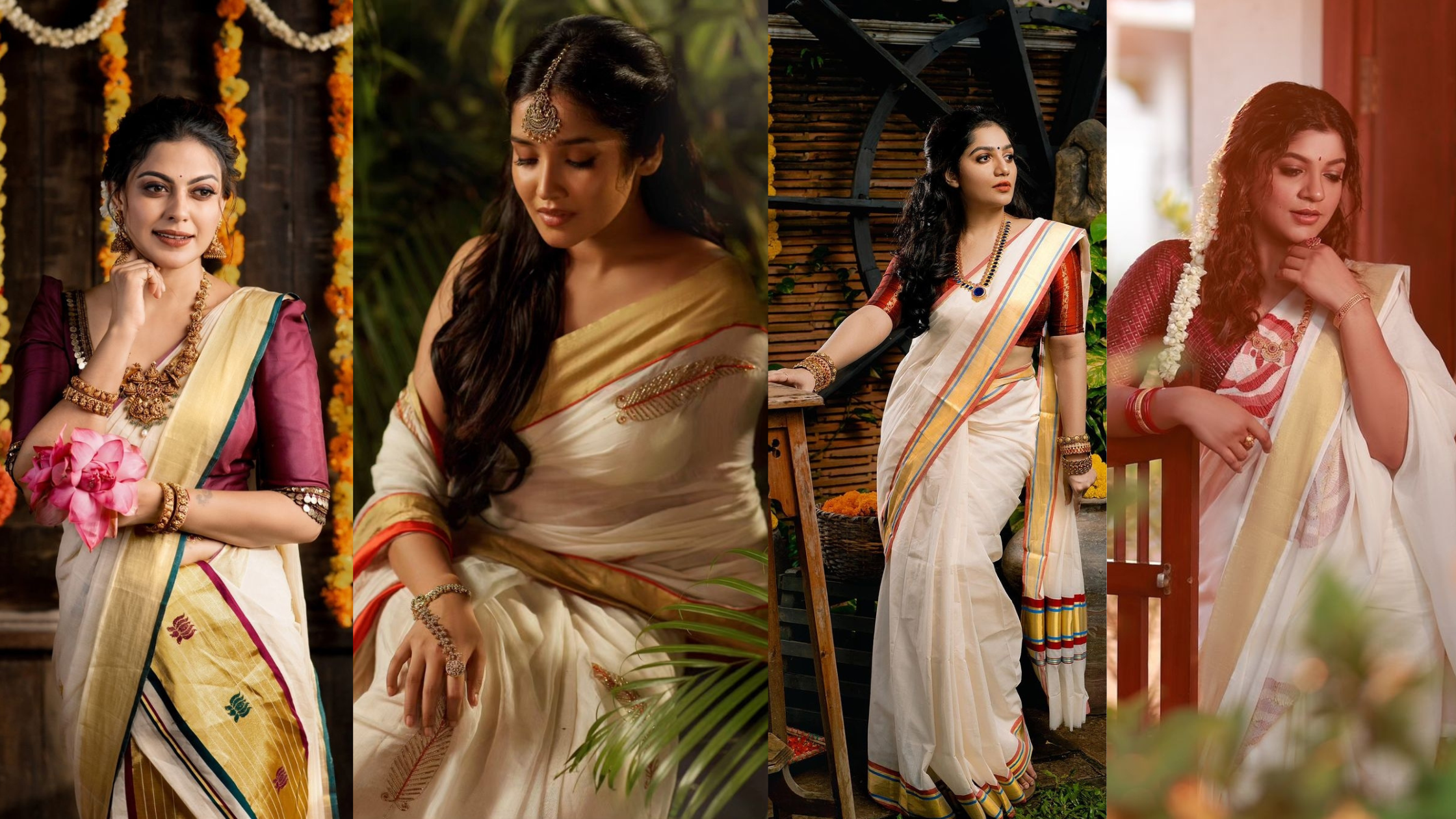
Onam, the grand harvest festival of Kerala, is a celebration of tradition, culture, and elegance. Each year, Malayalam movie celebrities embrace the essence of the festival by donning a mix of timeless traditional outfits and contemporary styles that reflect their unique flair. From graceful sarees to classic set mundus, the stars bring out the best of Kerala’s sartorial heritage. In this lookbook, we decode the standout fashion moments from your favorite M-Town celebs, showcasing how they beautifully combine tradition with modern elegance to make a statement this Onam season.
Anushree
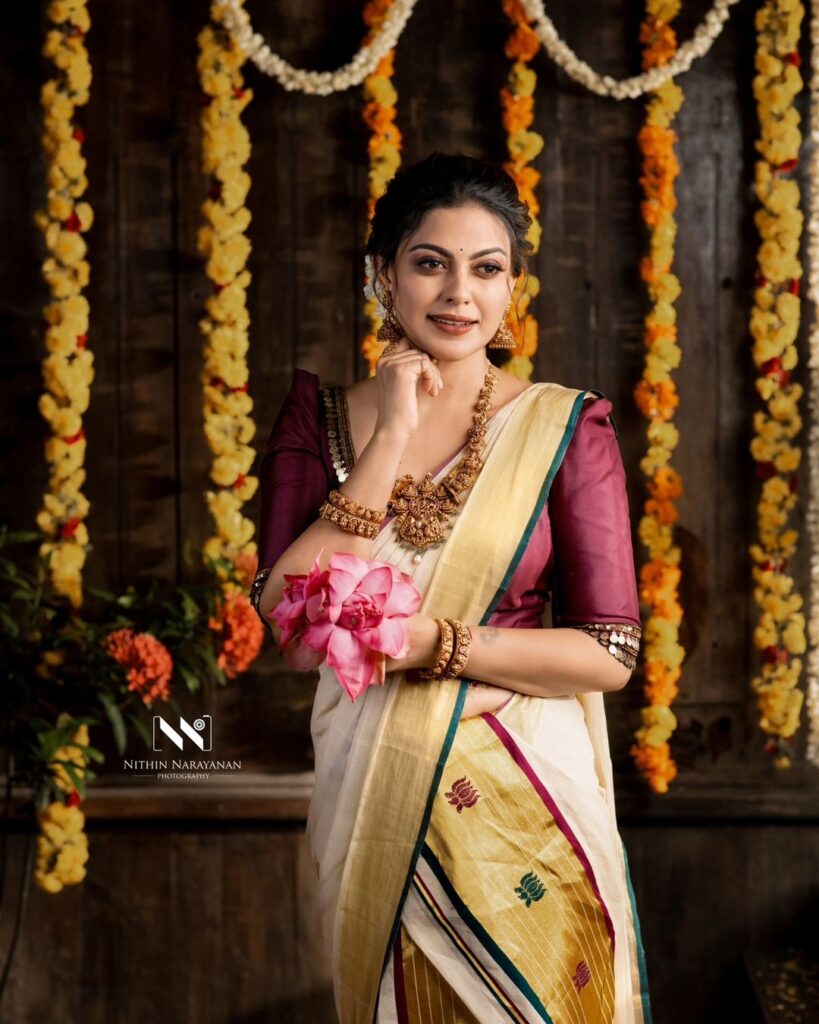
Anushree looked stunning in a double-colored set mundu from Naithu by Sruthi Prasanth, beautifully accessorized with exquisite jewels from Malabar Gold and Diamonds. Her look was perfectly complemented by flawless makeup by Sajith & Sujith.
Mahima Nambiar
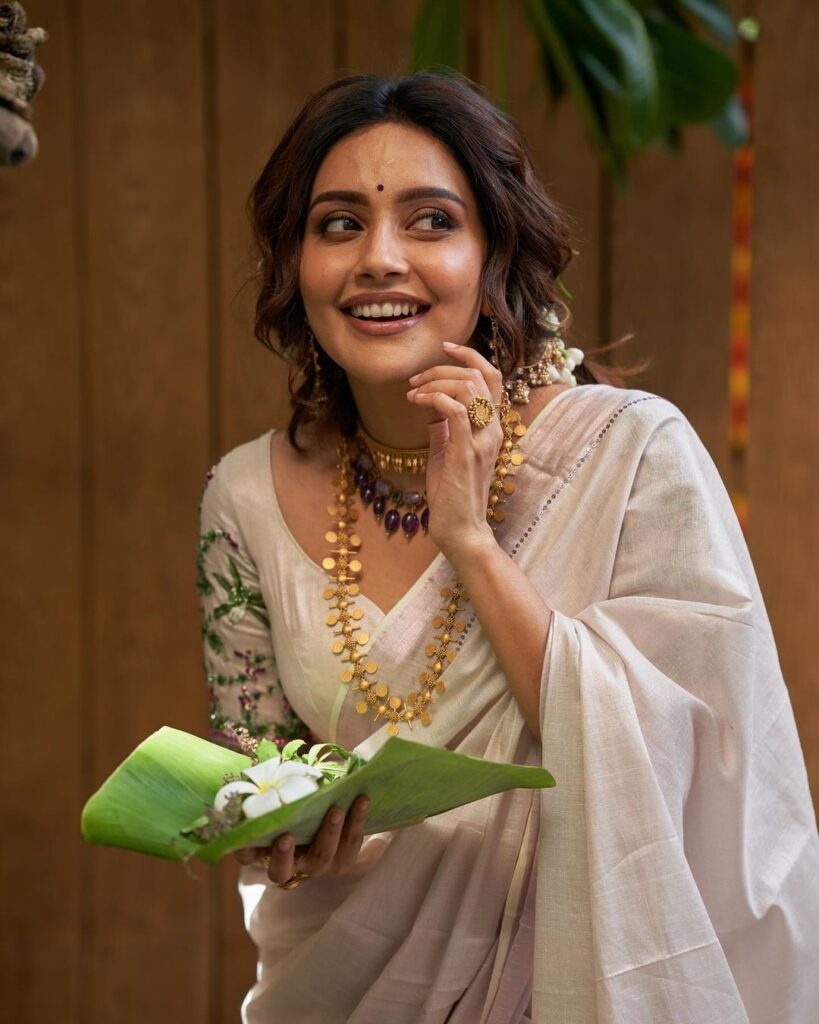
Mahima Nambiar looks stunning in T & M Signature’s Onam collection, “Thumbayum Thulasiyum.” Her festive look is perfectly complemented by exquisite jewelry from MOD Signature. Styled by Jobina Vincent, the ensemble is further enhanced with flawless makeup and hair by Pinky Visal, creating a captivating Onam look.
Ahaana Krishna
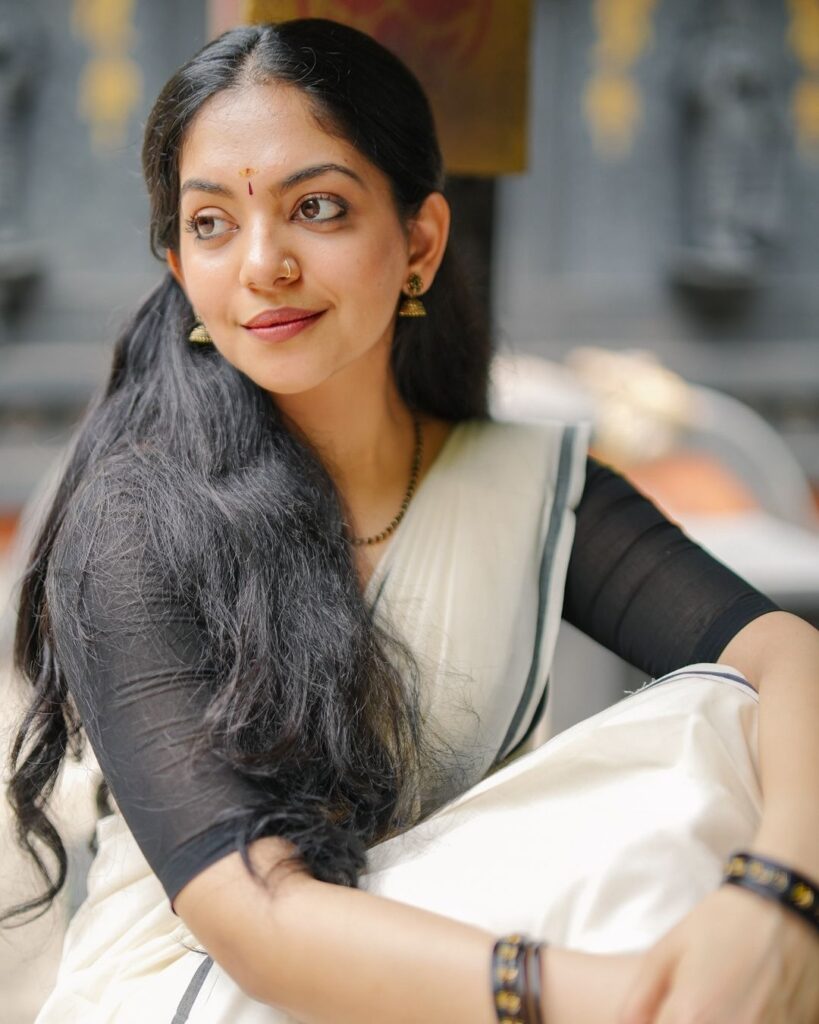
Ahaana Krishna exudes her signature charm with a simple yet effortlessly stylish look for this Onam in Black Set Mundu. Staying true to her unique “Ahaana style,” her minimalistic makeup and elegant hair were beautifully crafted by Amala Brahmanandan, perfectly complementing her festive vibe.
The Sukumaran Family
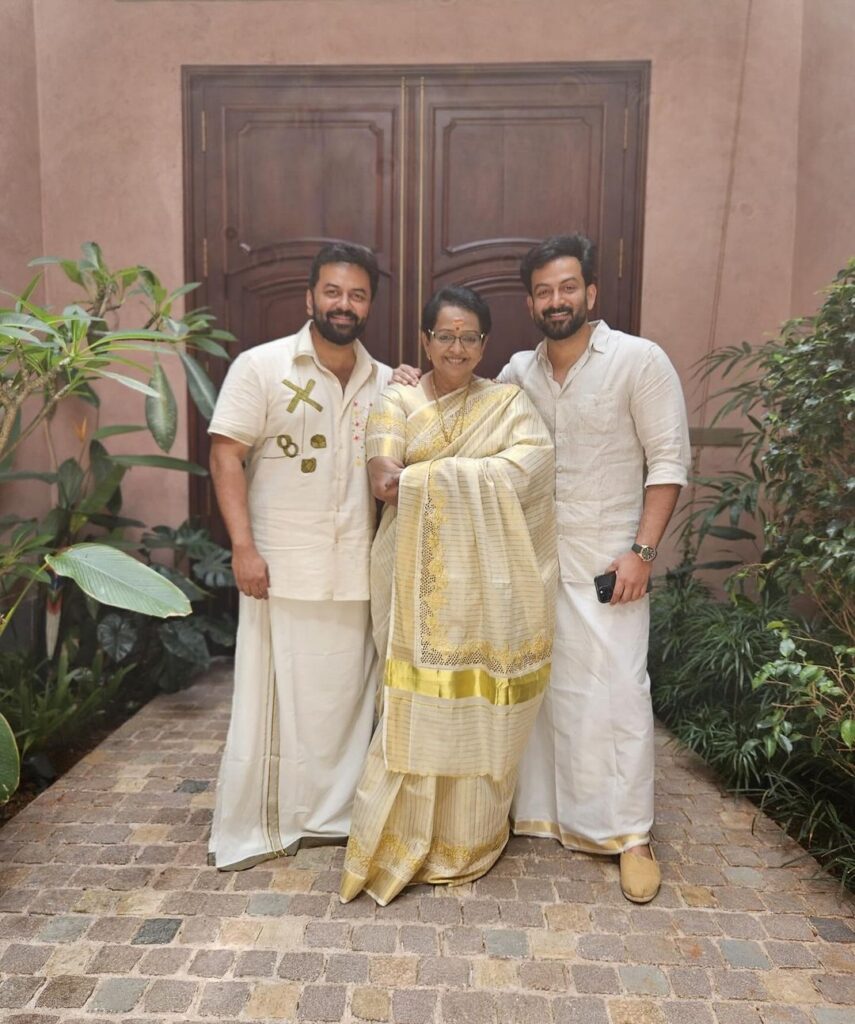
The Sukumaran family radiates elegance in their traditional Onam attire. Indrajith and Prithviraj opted for timeless simplicity, donning classic white shirts paired with mundus, while Mallika Sukumaran exudes a proud motherly grace in a beautiful, classic Kerala saree, perfectly capturing the spirit of the festival.
Shilpa Bala
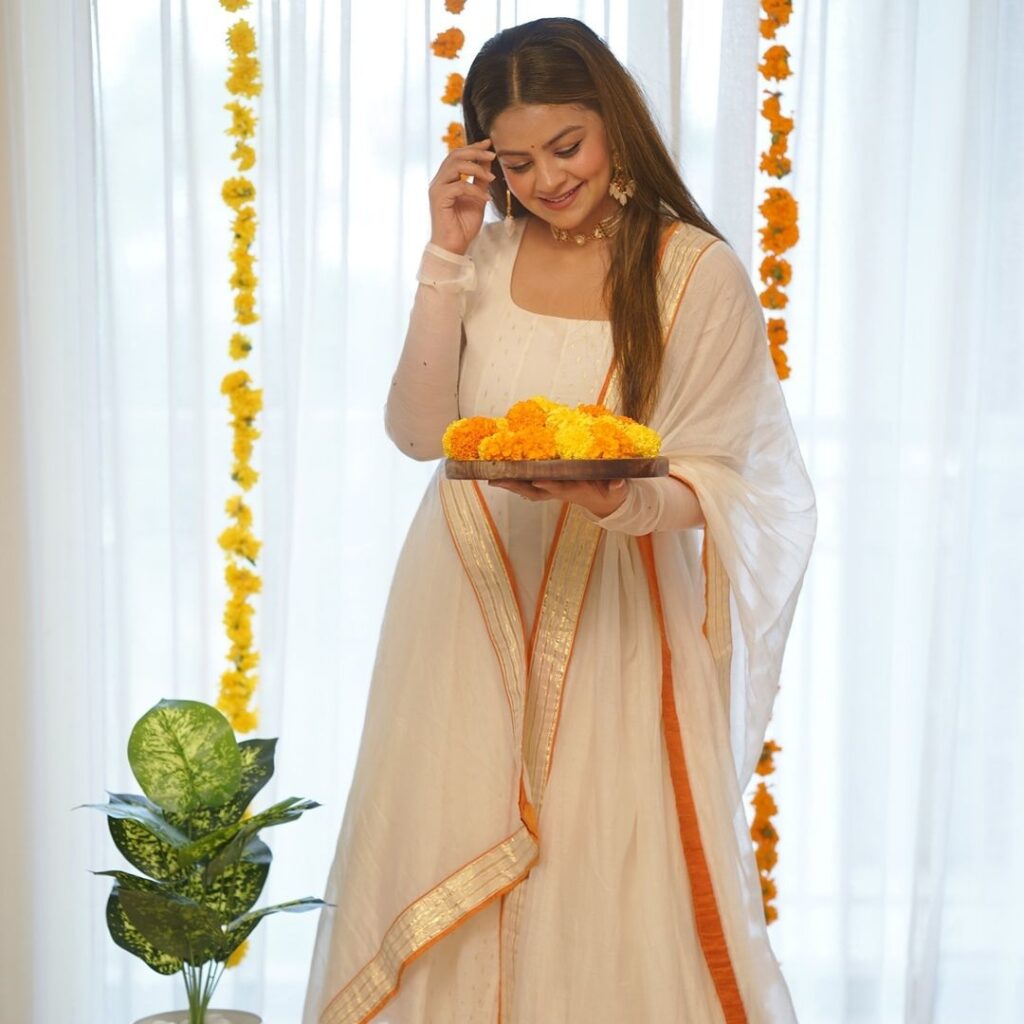
Shilpa Bala looks stunning and stylish in a white and orange traditional salwar by Kalaakari, exuding festive charm. The look, styled by Rashmi Muraleedharan, is perfectly complemented by elegant jewelry from Pure Allure. Her radiant makeup and hair, done by Sanaah, complete this beautiful Onam ensemble.
Anikha Surenderan
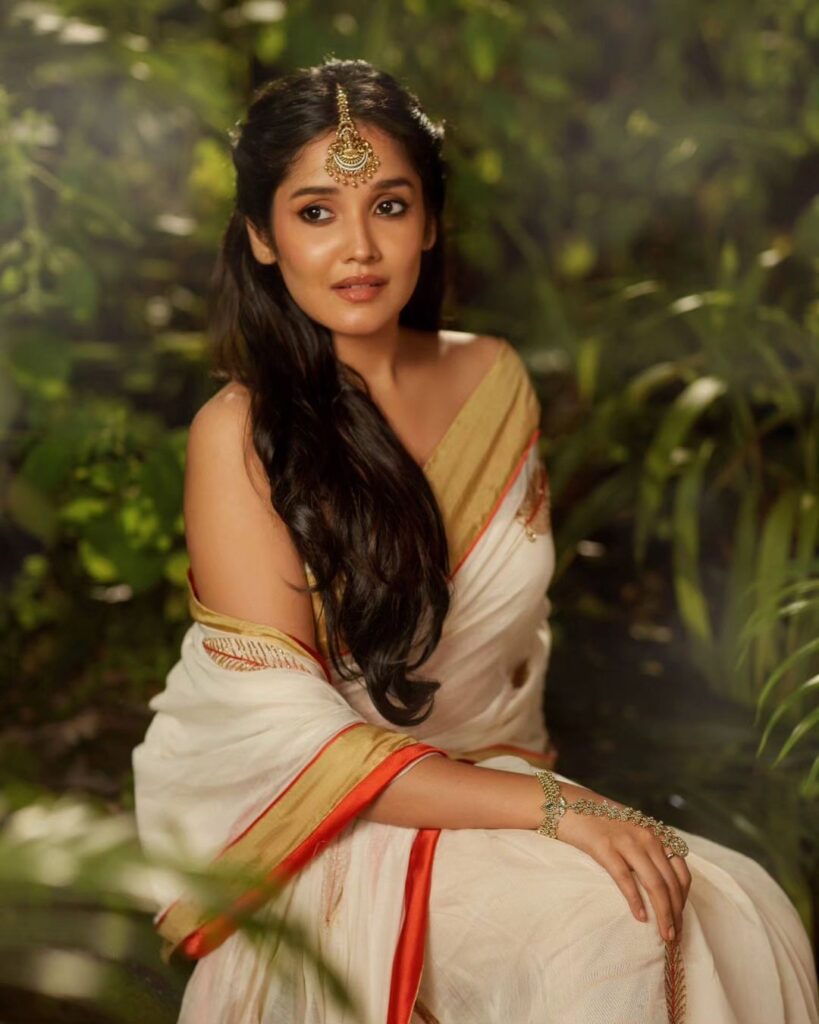
Draped in the stunning ‘Nila’ saree by Anusha Reji, Anikha Surendran mesmerizes with her grace and style. Styled to perfection by Mehaka Kalarikkal, her look is elevated by exquisite jewelry from Goldencup Bridal Rental Jewellery. With flawless makeup and hair by Ashif Marakkar. Anikha’s Onam look is truly captivating.
Nikhila Vimal
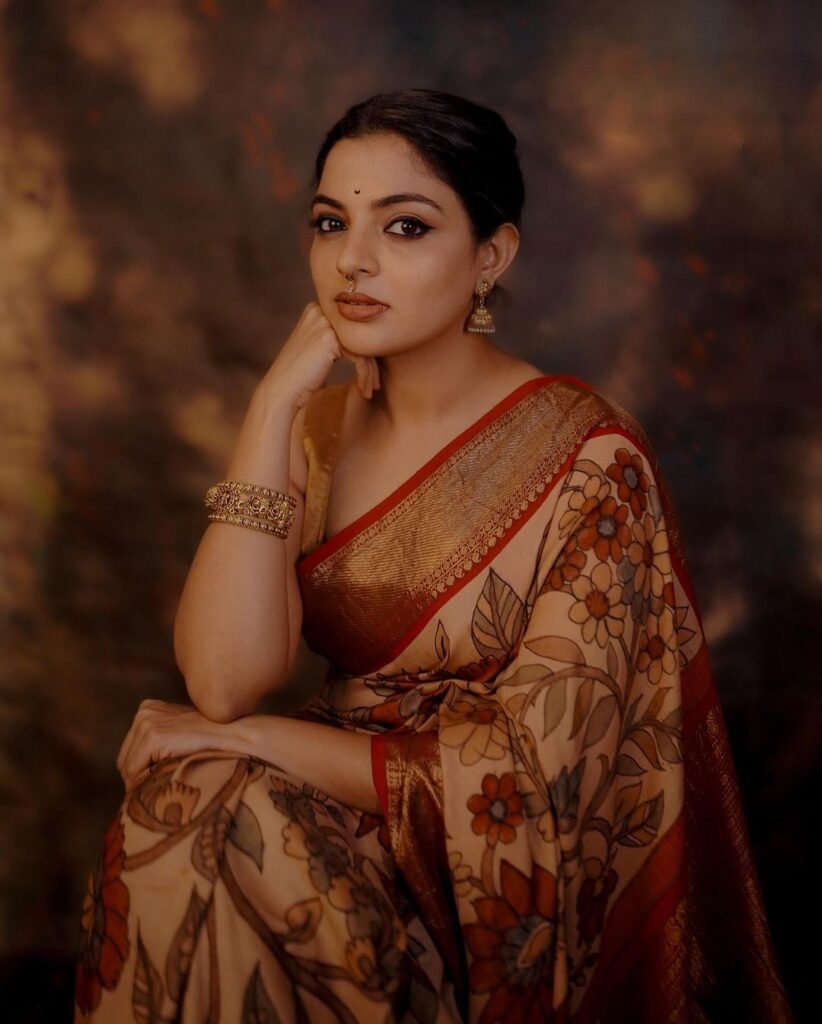
Like a muse straight from Raja Ravi Varma’s timeless canvas, Nikhila Vimal exudes ethereal charm in a stunning Pen Kalamkari Kanchipuram saree by The Saffron House. Styled by Smiji, her look is further elevated by flawless makeup and hair by Femy Antony
Dulquer Salman

Dulquer Salmaan looks ravishing in a classic white kurta set, effortlessly blending tradition with chic style. His Onam look radiates simplicity and elegance, making a timeless fashion statement for the festive season.
Pearly Maany
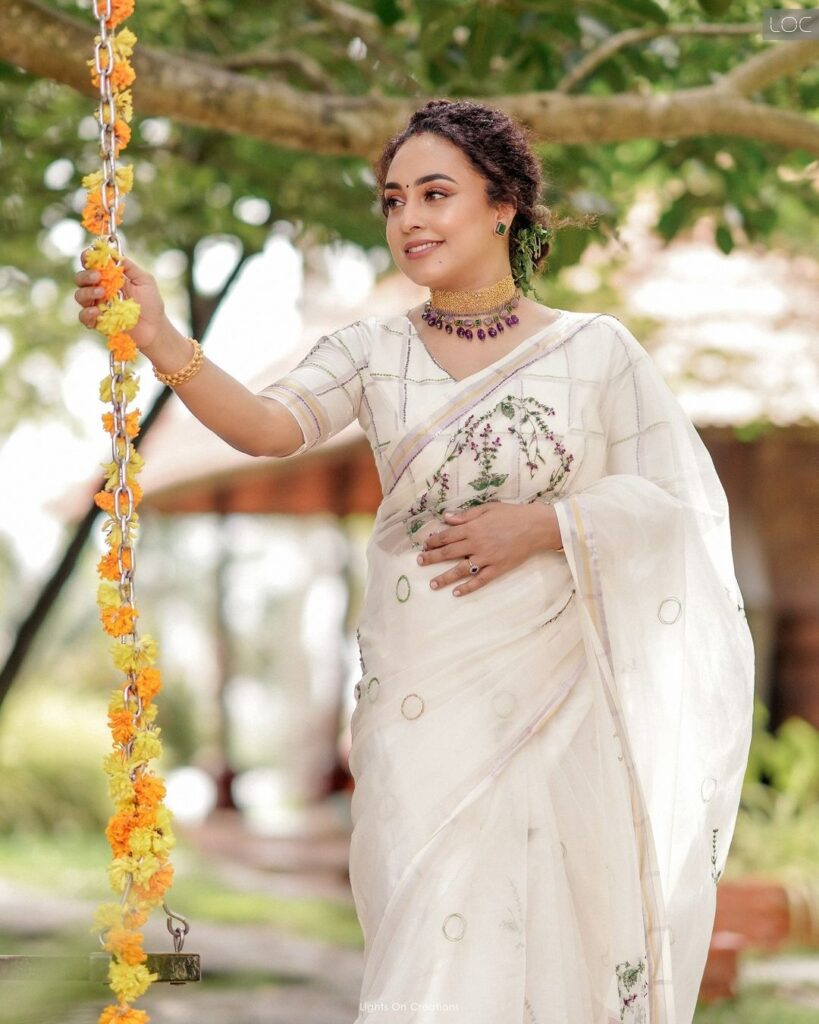
Pearly Maany looks stunning in a saree from T & M Signature’s Onam collection, “Thumbayum Thulasiyum.” Her elegant look is perfectly complemented by exquisite jewelry from MOD Signature Jewellery, with flawless makeup and hair by Touch by SiRe. The saree draping, beautifully done by Krishnapriya P V, completes Pearly’s enchanting festive ensemble.
Arya Babu
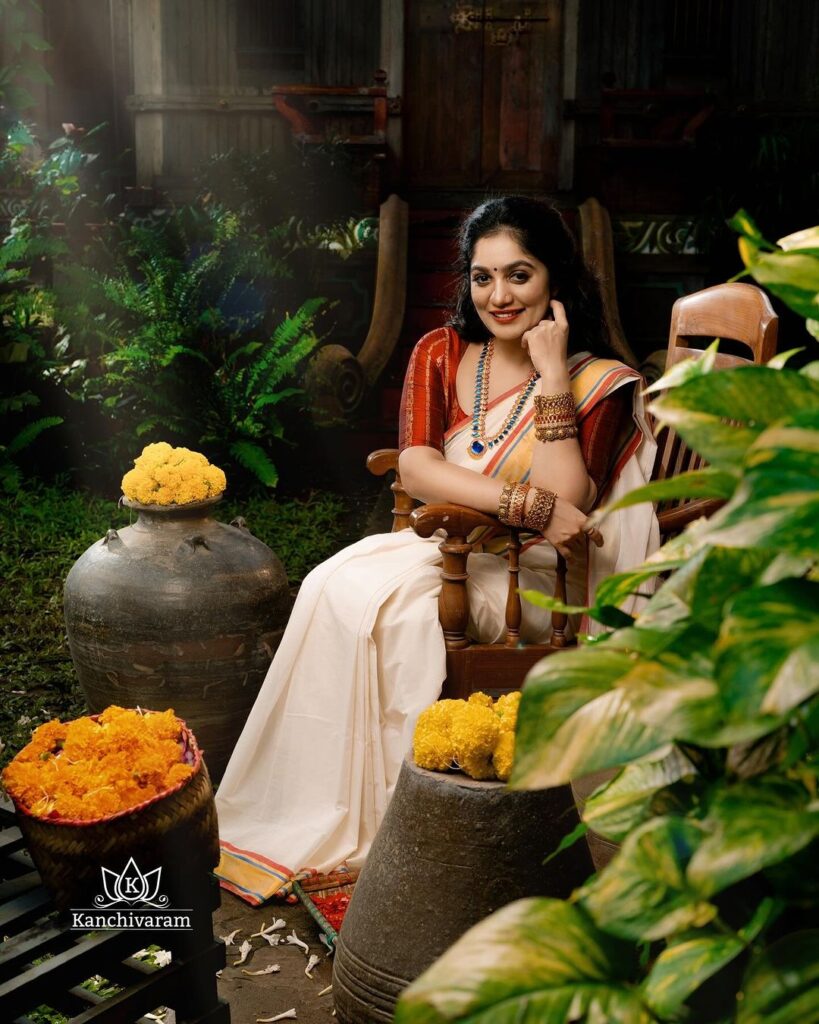
Arya graces this Onam in a pure Kerala handloom set saree by Kanchivaram.in, embodying the true essence of tradition and festivity. Styled by Sabari Nath, her look is beautifully complemented by elegant jewelry from Gemforher, with flawless makeup and hair crafted by Manju Michael’s Salon. Arya’s ensemble is a perfect reflection of timeless Onam elegance.
Navya Nair
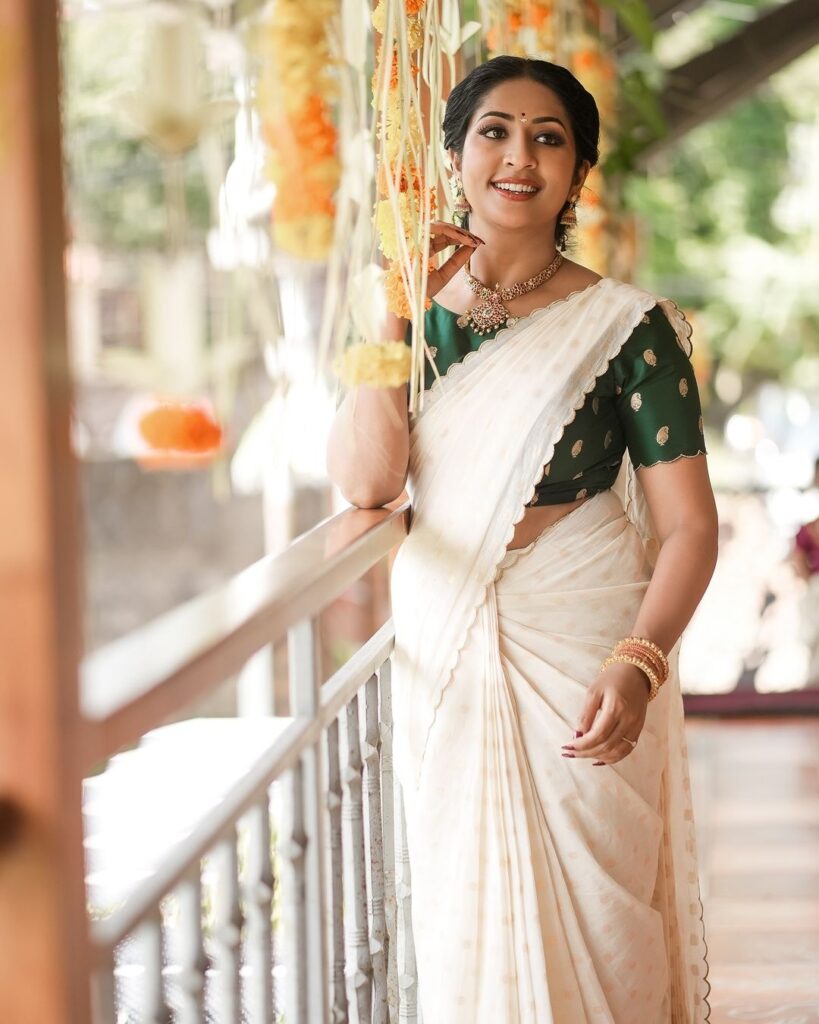
Navya stuns in her Onam look, wearing a beautiful outfit by Jugalbandhi. Her flawless makeup and hair, crafted by Sijan Joseph, enhance the festive charm. Adorned with exquisite jewelry from R. Giri Pai Jewellery, the look is captured to perfection by Black Lenzio, making Navya a vision of elegance this Onam.
Priya Prakash Varrier
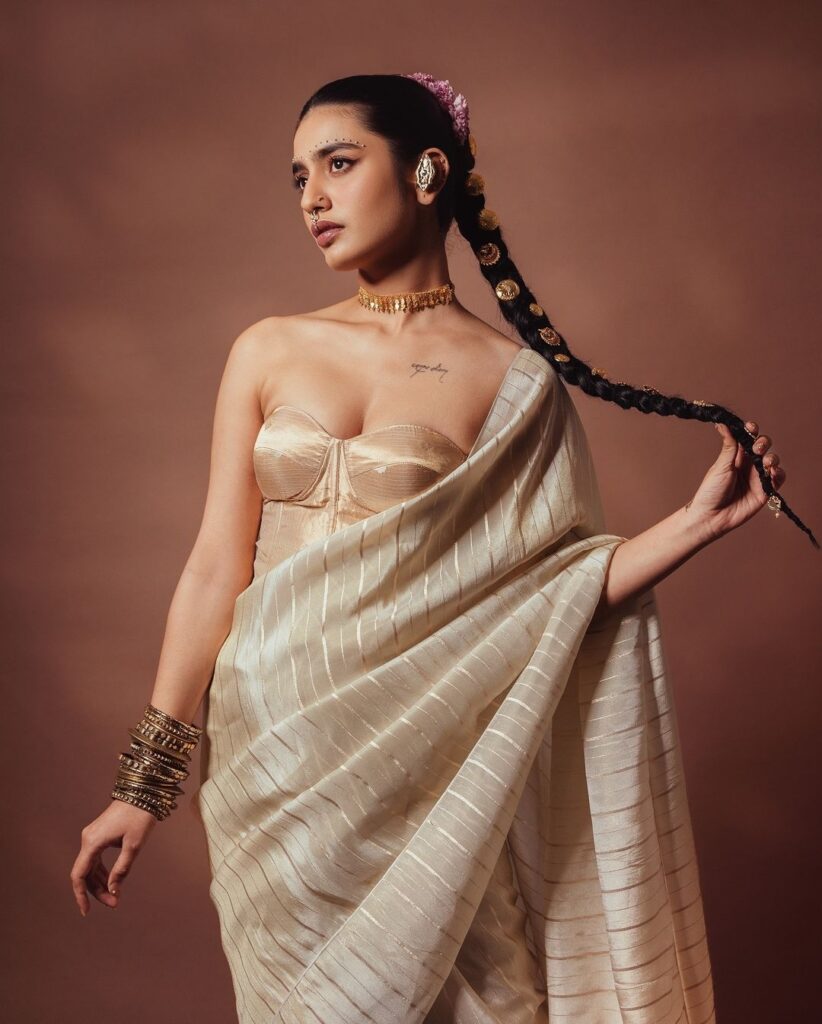
Priya Prakash Varrier looks gorgeous and modern in a stunning saree by Mloft. Styled by Asaniya Nazrin, her look is flawlessly complemented by makeup and hair crafted by Unni, making her stand out with a perfect blend of traditional elegance and contemporary chic.
Aparna Balamurali
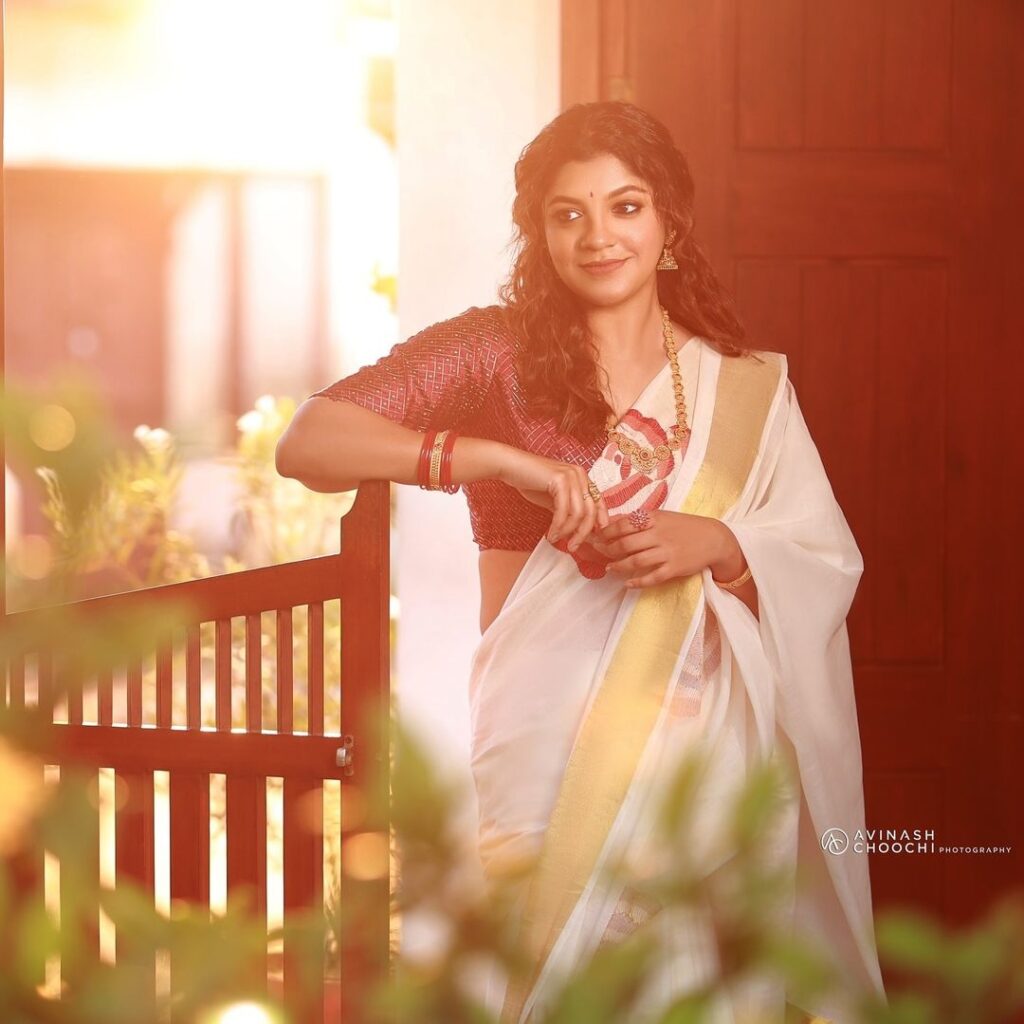
Aparna Balamurali looks traditionally beautiful in a Kerala saree by R O U K A by Sreejith Jeevan. Styled by Rashmi Muraleedharan, her look is complemented with flawless makeup and hair by Sruthi Sai. The ensemble is completed with exquisite jewelry from Nakshathra Gold and Diamonds, making Aparna’s Onam look timeless and elegant.
Amala Paul & Family

Amala Paul’s family Onam picture is an absolute dream, with the family dressed in stunning red and white outfits. Amala shines in an elegant ensemble by Made by Milan, while Jagat looks dapper in his outfit from House of Messcal. Styled by Sapna Fathima Kajha, the look is further enhanced by flawless makeup and hair by Sajith & Sujith, and exquisite jewelry from Cressida Signature Jewels. Together, they capture the perfect festive spirit in this beautiful Onam portrait.
Rajisha Vijayan
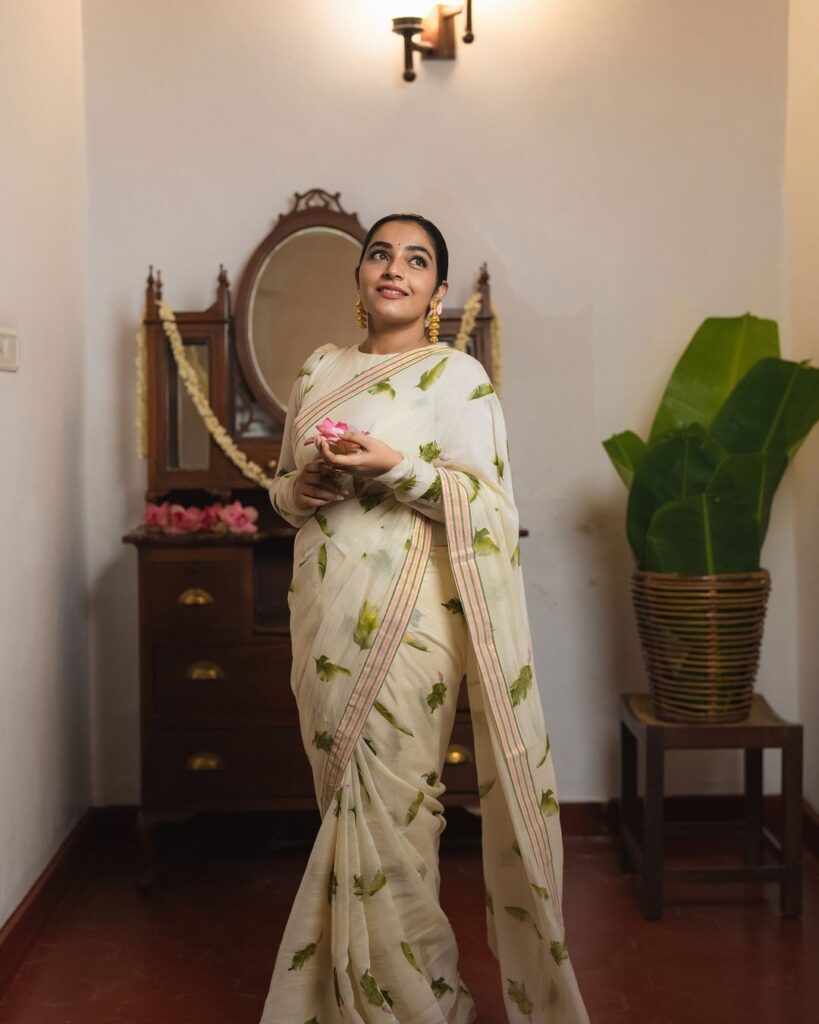
Rajisha looks stunning in a leaf-printed saree by ALDA Designer, effortlessly blending tradition with a modern twist. Styled by Amritha Lakshmi, her look is perfectly complemented by makeup and hair by Laxmi Venugopal. The ensemble is enhanced with elegant jewelry from TT Devassy Jewellery, and the draping, beautifully done by Exotic Makeover’s Elizabeth Shinitha, completes this mesmerizing Onam look.
Miya

Miya embraces the spirit of Onam in a pure Kerala handloom Kasavu saree by Kanchivaram.in, radiating traditional elegance. Styled by Sabari Nath, her look is beautifully complemented by makeup and hair by Sijan Joseph. The ensemble is further enhanced with exquisite jewelry from Mayoora Jewelry Designs, and the saree draping, skillfully done by Krishnapriya P V, completes this timeless Onam look.
-
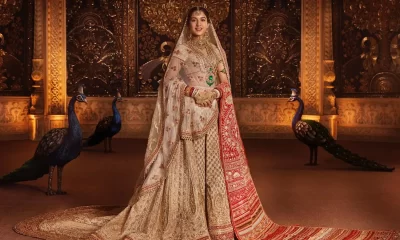
 Style11 months ago
Style11 months agoBridal Guide : Best Looks of Radhika Merchant Ambani
-
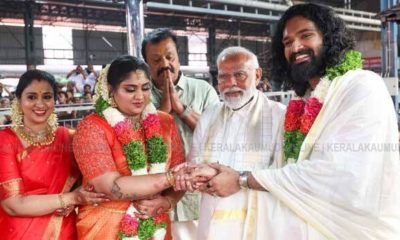
 Entertainment1 year ago
Entertainment1 year agoThe Stunning looks from Bhagya Suresh’s Wedding
-
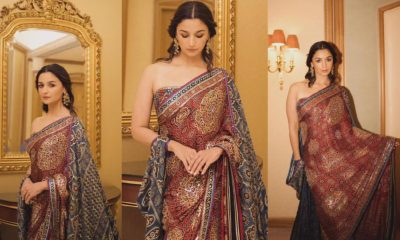
 Fashion1 year ago
Fashion1 year agoMost Discussed Ajrakh Saree of Alia Bhatt
-

 Entertainment1 year ago
Entertainment1 year agoThe Most Stylish Guests of Bhagya Suresh Reception
-

 Entertainment1 year ago
Entertainment1 year agoBridal Bliss : All Bridal Looks of Swasika Vijay
-
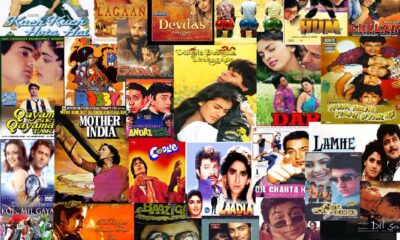
 Movies1 year ago
Movies1 year agoA Nostalgic Journey Through Love &Cinema : Best Bollywood Romantic 90s Movies
-
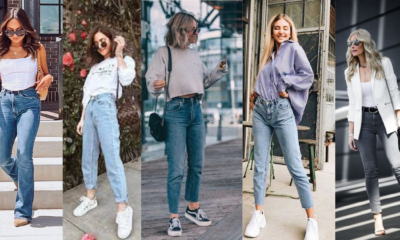
 Fashion1 year ago
Fashion1 year agoMajor Denim Trends You Need To Know in 2024
-
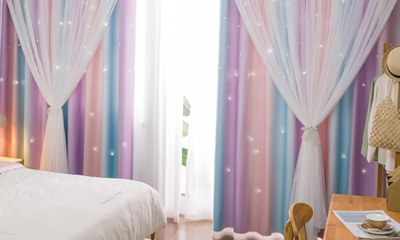
 AD8 months ago
AD8 months agoPopular Curtain Fabrics to Consider for Your Home


